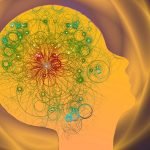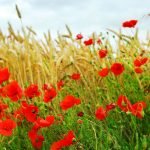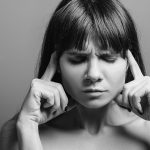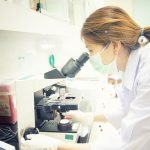Transitions: The Philosopher’s Stone, Pt 3
Reverend Steven A. Bailey, ND
We credit Confucius with saying, “No matter where you go, there you are” – a wise reminder for life journeys and choices, and a good starting point for a discussion about death, dying, and transition. Disagreements and common themes are abundant when it comes to beliefs about what follows death. The soul, or retaining a personal identity after the body has ceased functioning, is one view of the afterlife. My discussion will be based on my own beliefs and faith, which is: no matter where your body goes, there you are.
Naturopathic practice and philosophy places the physician in a unique role during the late stages of aging and disease. Possessing a medical understanding of disease progression, naturopathic medicine holds that there exists a Vis in nature, and a spirit, soul, or personality in all people. We work to elevate the Vis and we recognize its fading moments. We are asked for advice, sought for counsel, often given a sacred trust by patients, friends, and family in the final days of life. Our own life views blend with our education, experience, and natures to determine how we are able to help, provide comfort, and address the fear and pain that can often accompany the end of life. Our views and beliefs will help determine how we deal with our own mortality and what we feel and understand come the passing of family and friends, companion pets, and the anonymous lives we bear witness to in our news media.
What Happens After Death?
The questions we might be asked, though not on our board exams, would deal with the individual soul: “What is it?” “Does it really exist?” “What do you think happens after death?” Customs, religions, churches commingle with science to define the answers to these and similar questions. There are clear differences found between Catholics, Methodists, Southern Baptists, Mormons, the Witnesses, and the many divisions of but one of the world’s major religions. Often, there is a promise of a great heavenly home, as long as you keep your membership card active. Your membership card contains sacred rules and directions about how to live in order for your soul to experience eternal life. It would be my premise that the many differences are due to the human participation in this discussion, and that there is but 1 truth about life and what transpires when the last breath has been taken. There exists a yet-to-be-written exact definition of what life is, and within it is the answer to what happens when the outer casing of the body is sloughed off.
I was 12 years old when my uncle Carl died. My favorite uncle, he looked like Abe Lincoln and made me laugh with his Will Roger’s home-spun humor. He had been bedridden in the tiny town facility in Wallowa, Oregon, for weeks. One morning, he stood straight up from bed, went to the closet, dressed, and walked the few blocks to town to arrange for his funeral, burial, and notifications, as he didn’t want to burden his wife. He passed away that night. Both Aunt Nora and Uncle Jess swore that Carl came to them in a vivid dream, at the end of the bed, that he said goodbye, and that he was fine. Jesse would call his sibling, Nora, that morning at sunrise, and she would be the first to recite the dream he had called to tell her about. With this and other childhood experiences, I came to accept that there was this “spirit stuff,” then an entirely separate world of science that had yet to include much beyond the 3-dimensional world of our planet, solar system, and galaxy.
The term “life” and the basic concepts that define it come to us from this 3-dimensional scientific world. What happens after life is relegated to composting, ashes to ashes, and little else. Science and medicine, for the most part, deal with the strictly physical considerations of life, while the church attends to the spirit and soul. There exist truths in both fields, but this segregation of thought leads to incomplete, as well as errant, conclusions. Life includes everything that is true within religion and everything else that remains unstated: consciousness, the subconscious, the dream state, the universal consciousness, the soul and the spirit, and everything that we have yet to see or consider. My own inner confidence about where we go comes from countless synchronicities and continuous study. This confidence is based upon an understanding that can accept the limitations of religion and science that present contradictions or false duality. For quite some time, this understanding has continued to be reinforced with each new experience of a close friend or relative passing.
All cultures and all religions have had creation theories and some belief in what happens after we die. Sacred resting spots, heavens, nirvanas, often countered with purgatories of all descriptions and natures, are true of many belief systems, while reincarnation is a central theme in other belief systems. A prevailing truth within most of these 2 basic groupings, is the idea of self or soul that is a discrete entity associated with each personhood. The Tibetan system of life and reincarnation is divided into 4 “bardos,” or succinct phases of life: birth, human life, death, and transition to the next bardo of birth. Hindu and Buddhist faiths believe it to be very important that when in the bardo of death, we do our best to place ourselves in the presence of our God, sacred readings, and muster readiness for the journey into the transitory spiritual presence readying for the next incarnation. We have last rights within the Catholic faith, and ceremonies of passing are common to most religions. We honor the lives of the deceased and we wonder about where they have gone and if they are well. We ask whether there is life after death, just as my friend Paul would often quip, “Is there truly death after life?” We will only know for certain when we, ourselves, experience this change. The greater the uncertainty about what comes next, the greater the sadness and fear that resides within our daily lives. There is ample discussion of reincarnation in the Holy Bible, though most Christians fail to see or acknowledge this, as the “judgment gate,” and an eternal life in Heaven, is their common goal.
Body, Mind, and Spirit
We – as holistic providers, as naturopathic doctors – use the body, mind, and spirit trilogy when describing the subtle bodies of life. The body is, of course, those trillion cells that make up the bones, muscles, tendons, glands, organs, and chemicals within our beings. When we speak of the mind, we are often referring to our conscious awareness as well as our subconscious presence. When we speak of spirit, we are speaking of a much bigger Vis – an energetic presence that is largely identified by our faith and our observations of events, but which remains outside of any scientific identification or measurement. A helpful explanation of our entirety comes from the ancient Greek discussion arguing that man or woman is made up of substance (earth, air, water, fire, ether), form or intention (genetics), and soul/spirit. The soul and spirit are individually identified within 1 category of existence. The spirit is that which provides life, is present in all things, and – like the ocean – houses infinite entities. The soul is our own unique identity, our personhood, our “personality” at the grand level. It is the soul that we wonder about, and the spirit is left to be in awe and wonder as we develop our own beliefs and relationship with this higher power or vast presence of this universe. Many have described the soul as a drop of water, and the spirit as the ocean, easily absorbing a drop and with equal ease, able to generate countless new drops at any time. Let us consider the soul…
The soul is who you are. It is housed within your flesh and it lives in the sea of the spirit. I believe it to be eternal; the consciousness that you possess is retained as you leave the sensory world of your body and migrate to a dimension beyond our physical world. It includes the subconscious and the dream worlds. Living in the sea of the spirit, it possesses a window to the universal consciousness, the absolute truth of the living spirit. It is the source of our free will, and our conscious awareness of our whole being, which is as limitless or as limited as our life experience allows. It can present itself in dreams, can receive subtle or strong communication from other souls and spirits, and – even though it is eternal – it lives within our bodies, aware of its physical constraints of time, space, and natural laws. It experiences emotions in the human form, though it is complete and unencumbered by the body. There is no pain, no sadness, no feeling of isolation or fear. Our consciousness can be dumb to the universal truths and our spiritual surroundings, but the soul lives in awareness of all, and is in touch with the future. We receive inspirations, visions, prophecy, and truth to the degree that we are open to these perceptions; or, the soul can stay trapped within a consciousness of disbelief and denial. It is here for the ride.
Edgar Cayce stated that the spirit enters the body with the first breath. The “breath of life” is mentioned in many sacred writings, and we define death as that immediate time after our “last breath.” This is the life and the death of our current physical body, but it is more of a spiritual occupation and resting place of our soul, which existed before our body’s time and continues thereafter. What the soul does after that last breath is the question of the ages. What is the meaning and purpose of life? It is defined by what we labor for within our spiritual quests on earth: all to be revealed upon our going home, or within the broadened views of our life experiences and teachings in this human form if we’re lucky. Taking counsel from the writings of Paracelsus, the teachings of the esoteric orders, and from many books on living and dying, here is what I hold true for the immediate and future order of things for our souls, once departed from our bodies…
How I See It
Within the framework provided by the discussion of the “bardos,” we see that the time between the bardo of death and the bardo of new life reincarnation, is instantaneous. This may be true from a spiritual perspective, in which there is no time in the afterlife; however, I do hold that we retain our most recent human personalities for some time, directly tethered or related to those friends and family still living on earth. Paracelsus held that the soul remains close to its earthly home and community for about 72 hours; then, it comes and goes as it chooses. For these 3 days after death, we, retaining our human personality and consciousness, remain close to family, friends, and those we love. We may send signs to our closest friends in animals that appear surprisingly or seemingly out of context, in dreams, or through other channels. On the third day after my father passed, a crow walked through my sister’s open door, hopped up on her dining room table as she sat there, looked at her for a minute or 2, and then hopped down and walked out the back door. Never before and never since has this occurred, and my sister – who is anything but an unscientific and superstitious person – absolutely knew that this bird came through my father’s intention. I myself had 2 small birds nearly stand on my feet a few weeks past, as I stood alone in a cemetery, having just celebrated with her family the passing of a patient and friend. Not the first, but worthy of adding to this discussion. They seemed clearly sent by my friend’s soul, simply telling me that she was home, and safe.
The soul cares for those that we, as humans, knew and cared for throughout life. It is in this knowledge that the soul chooses to remain fixed to the most recent identity, personality, and form until everyone that they knew, down to grandchildren and great-grandchildren, have made their transitions into the timeless and eternal world of the spirit. The souls join their spirit guides, which can often enter into our conscious or dream states for a variety of reasons. We will suddenly remember them, we will be awakened by them at a time of critical need, and we will be calmed and supported by their presence in our lowest hours. Once we have left our frail and ignorant human flesh, we too become all-knowing, freed of time and place, and remain attached to our personalities until all whom we have known and cared for have also come home. It is a cycle, and within the short space of 3 or 4 generations, the soul is again free to consider, once more, returning to the sensory-laden and emotionally fragile form of a new human being. This is how I see the soul, life, death, and the transition that takes place with our last breath. It is a view that has, and continues to be, reinforced by every passing day, every passing way, and every passing acquaintance.
 Reverend Steven Bailey, ND, received his doctorate in naturopathy in 1983 from NCNM in Portland, OR; he has since maintained a full-time practice there. He is also an ordained pastor with Celebration Tabernacle Church in Portland. Dr Bailey’s practice ranges from well-baby exams to end-of-life conditions; fasting and juice therapies, botanical medicine, homeopathy, physical medicine, and nutrition are his primary tools of practice. Dr Bailey has a long history of public service, media contributions, and teaching, including instruction at NCNM, the publication of more than 250 articles, thebaileynews blog, cable access shows, and public speaking. He has served on numerous public and non-profit boards, as well as in the Albina Ministerial Alliance Teen Parent Program. He has also served nationally as a speaker of the House of Delegates for the AANP, in OR as a legislative chair for the OANP, and locally as director for the non-profit, Fresh Start for Restorative Health. Married 18 years to Susan LeMaster, they have 1 child, Shayla, now in high school.
Reverend Steven Bailey, ND, received his doctorate in naturopathy in 1983 from NCNM in Portland, OR; he has since maintained a full-time practice there. He is also an ordained pastor with Celebration Tabernacle Church in Portland. Dr Bailey’s practice ranges from well-baby exams to end-of-life conditions; fasting and juice therapies, botanical medicine, homeopathy, physical medicine, and nutrition are his primary tools of practice. Dr Bailey has a long history of public service, media contributions, and teaching, including instruction at NCNM, the publication of more than 250 articles, thebaileynews blog, cable access shows, and public speaking. He has served on numerous public and non-profit boards, as well as in the Albina Ministerial Alliance Teen Parent Program. He has also served nationally as a speaker of the House of Delegates for the AANP, in OR as a legislative chair for the OANP, and locally as director for the non-profit, Fresh Start for Restorative Health. Married 18 years to Susan LeMaster, they have 1 child, Shayla, now in high school.










